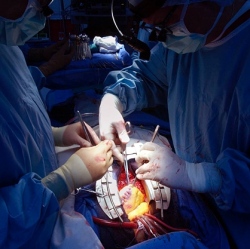
Scientists from the Universities of Sydney, Harvard, Stanford, and MIT have bio-printed artificial vascular networks mimicking the body’s circulatory system. These networks are necessary for growing large complex transplantable tissues and organs for people affected by major diseases and trauma injuries.
“Thousands of people die each year due to a lack of organs for transplantation,” says study lead author and University of Sydney researcher Luiz Bertassoni. ”Many more are subjected to the surgical removal of tissues and organs due to cancer, or they’re involved in accidents with large fractures and injuries. “Imagine being able to walk into a hospital and have a full organ printed, or bio-printed, as we call it, with all the cells, proteins and blood vessels in the right place, simply by pushing the ‘print’ button in your computer screen. We are still far away from that, but our finding is an important new step towards achieving these goals.
“At the moment, we are pretty much printing ‘prototypes’ that, as we improve, will eventually be used to change the way we treat patients worldwide.” The research challenge was networking cells with a blood supply. Cells need ready access to nutrients, oxygen and an effective “waste disposal” system to sustain life. That’s why “vascularization”, a functional transportation system, is central to the engineering of biological tissues and organs.
“One of the greatest challenges to the engineering of large tissues and organs is growing a network of blood vessels and capillaries,” says Bertassoni. “Cells die without an adequate blood supply because blood supplies oxygen that’s necessary for cells to grow and perform a range of functions in the body.”
